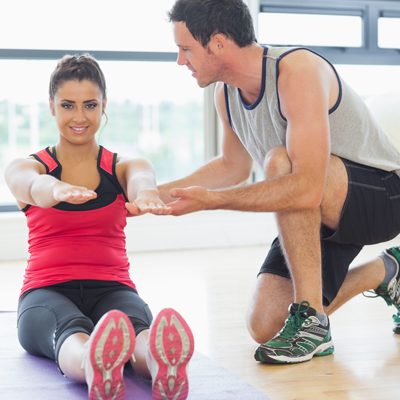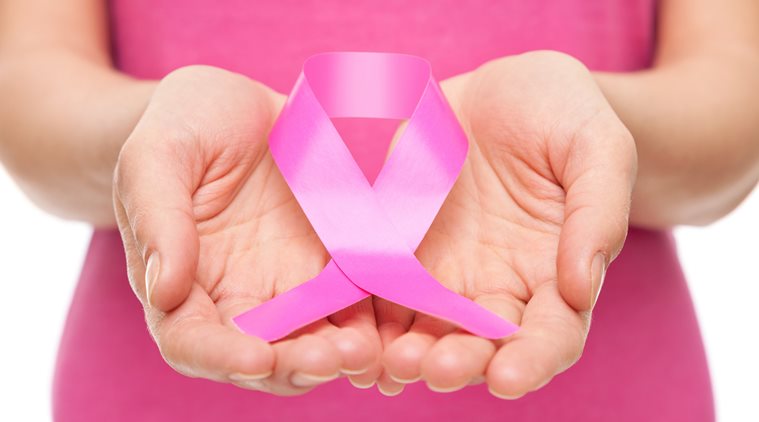One out of every eight women can be affected by breast cancer, and not only, after several years of cancer diagnosed cancer cases every year, but breast cancer is also the second most cancerous cancer. Apart from lung cancer, cancer is the second most important cause of death. However, men are more likely to have it than men, but males may also have a breast cancer diagnosis. Having a history of having breast cancer in your family, it is important to be aware of any change in your breasts and take precautions in advance. Being aware and early detection of disease increases the success of treatment and the survival rate.
Learn the research that is changing on the usefulness of breast self-examination.
If you find and select the right cancer hospital in Delhi, then breast cancer is avoided. Credihealth is an online healthcare portal to find the best doctors from top hospitals. It’s a very helpful website and app.
Firstly, all women were recommended to perform Breast Self-Examination (BSE) every month. But, in 2009, after the publication of several major studies, the United States Prenatal Services Task Force started recommending women to teach continuously and formal self-examination. These research studies concluded that BSE does not reduce the mortality of cancer or the number of cancer increases.
According to the recommendation of the American Cancer Society and the United State Pervasive Services Task Force State, the women should be done on the discretion of women and they should be informed of the boundaries of BSE. But the most important thing is that the main purpose of this organization is to make women aware of the normal condition of their breasts.
In other words, BSE should not do the place of testing done by physicians to detect abnormalities, but generally, do BSE. Howe er, BSE may help you to be aware of the generality of your breast, and this can also help you with the help of a doctor to find changes in the breast. BSE should never be seen as a substitute for clinical breast exams done by physicians.
Do A Visual BBS:
You can do it whenever you want, but, it is better to do it after your periods because touching your breasts at that time reduces the pain and swelling is less. Try to do this at almost the same time each month. Sit in front of the mirror, wear a shirt or bra. Raise your hands up and down. Also look at the following things with any changes in the size, shape, shape, and texture of your breast tissue:
- Padded and scaly skin such as orange peel
- New salivation
- Abnormal swelling or tangentiality in breast
- Changes in nipples such as retraction, itching or redness
- Nipple discharge can be blood mixed, clear or yellow.
Breast Self-Examination (BSE) by hand:
The best time to do BSE is at the time of your periods when you have the lowest pain in touching your breasts but usually can be done after a few days of the end of your period. [6] You can do this exam You can also lie down because your breast tissue is spread over the floor and thus becomes thin to easily fall or you can do even while taking the shower, where soap And water can help your fingers rotate smoothly on the skin of the breast.
Lay flat and place your right hand behind your head. Experiment (palpate) with the first three fingers of your left hand pressing the breast of the right breast. Keep in mind that you use only the fingers of the fingers, not the tips.
Use three different level pressures to experience the upper part of the skin inside the middle of the breast and the tissue near the chest wall. Keep in mind that before proceeding on each area, use the levels of each pressure.
Start by pulling an image down the side below your underarms and pulling it up and down. Start with the collarbone and move down to reach your ribs. Go to the center of your body until your sternum (also called breast bone) is done. It is important to test the entire breast, so try to be a bit methodical in your BSE.
Now, reverse this process and place your left hand under your head and test it on your left breast.
Remember, your breast tissues are spread to the nearest parts of your armpit. Often, these places of Breast are called tail and these places can also be lump or cancerous.
Be comfortable with your breast:
Find out how they look and feel. Get acquainted with him and his texts, outline, size, etc. You can better tell your physician the changes in your breast.
Advise your partner to inform about any changes in appearance. Your partner can see the difference in your breast tissue, which you can not see because it can see your body from a different angle.
Know Your Risk Factors:
Some people are more likely to have breast cancer than others. You to be careful because you may be involved in one or more catoggers, you are not being wasted from breast cancer, but this means that you should be more conscious of your breast and regular clinical breast test and Mammograms should be done. There are some factories showing the highest risk.
Gender: Women are more likely to have breast cancer than men.
Age: Risk also increases with age. Most people over 40 years of age have breast cancer.
Menstruation: If you have already started menstruation before the age of 12 or if you are entering the menopause at age 55, then the risk increases slightly.
Pregnancy and breastfeeding: To get pregnant early or to get pregnant very often, both of them reduce the risk, likewise there is less risk of lactation than breastfeeding. Pregnancy after childbirth or after 30 years of age increases the likelihood of breast cancer.
Lifestyle: Obesity, smoking and alcohol use increase the risk of breast cancer.
Hormonal Replacement Therapy (HRT): Recent or previously used HRT can increase the risk of having breast cancer.
Know your Personal and Family Medical History:
Special Risk Factors related to you, your family history and your genetics include Personal medical history: If you have been diagnosed with breast cancer before, then the risk of having cancer again in your same breast or in another breast will increase.
Family History: If you or any member of your family has breast cancer, ovarian cancer, uterine cancer or colon cancer, then you are more likely to develop breast cancer. If this disease is to a close relative of your sister, mother, and daughter, then your risk is doubled.
Genes: Genetic deficits found in BRCA1 and BRCA2 can increase your risk of having breast cancer very much. If you have these genes, you can detect them by contact with the genome mapping service. Generally, approximately 5-10% of the cases are hereditary.
If you are worried about breast cancer, be more conscious when your breast tissue is normal. Thus, if you have any “abnormality” it will be easy to determine.
Discuss your health and well-being with your doctor and family. Over time, you have to do more than this, especially as well as aging.

